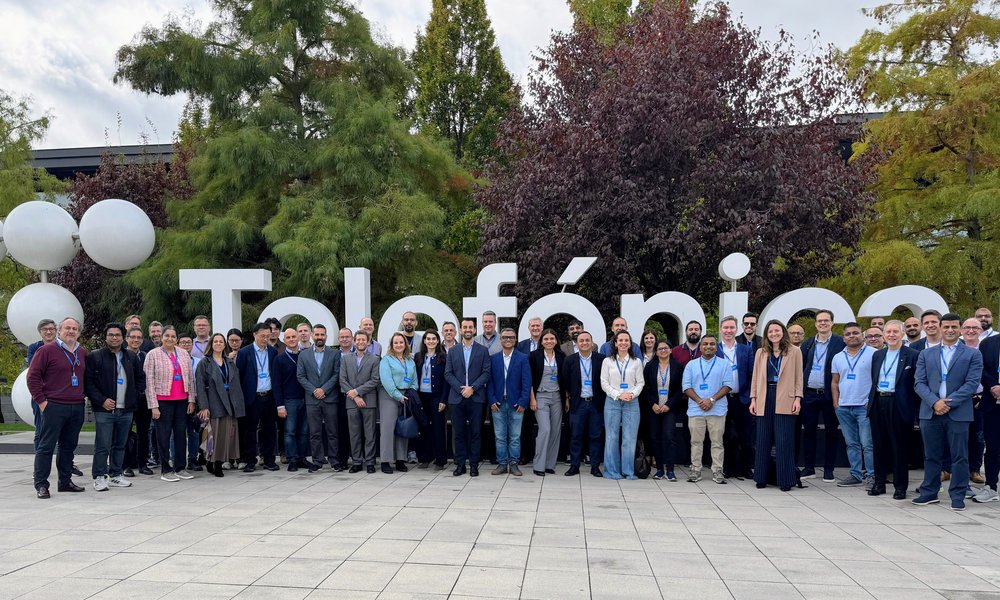As telcos progress towards Level 4 network autonomy, they are seeking deeper industry collaboration on ensuring governance, culture, and data readiness are enablers rather than stumbling blocks. And they are also putting in place the means to measure business outcomes.

Telcos spell out importance of collaboration and metrics to reach AN Level 4
At Telefónica’s global headquarters in Madrid, more than 70 experts from 24 organizations gathered to define what it truly means to reach Level 4 autonomy and how they can help each other get there.
Attendees at the Autonomous Networks Workshop, co-hosted by Telefónica and TM Forum, shared insights into their experience of building Level 4 use cases and spoke frankly about what approaches work and what still needs to be done. The discussions revealed a clear truth: the journey to autonomy is not just a technical evolution, it’s an organizational and ecosystem transformation.
Telefónica opened the workshop by sharing its operational journey — over 400 automation use cases implemented, 8 KPIs tracking progress, and tangible results such as cutting design cycles from 60 days to hours through its Fractal program in Brazil.
Orange, BT, and Telenor joined the conversation with complementary insights: while architectures and AI capabilities advance quickly, the real challenge lies in connecting technology with governance, culture, and data readiness.
As one panelist summarized, “The greatest challenge is not the code, but coordination — aligning thousands of people, processes, and systems across domains.” This sentiment echoed across the room. Operators agree that the most significant barrier to scaling automation is not innovation fatigue, but organizational inertia and fragmented data ecosystems.
The second major theme focused on measurement. The industry now has the frameworks — AN Levels, KEIs, KBIs — but the link between autonomy and measurable business outcomes remains fragile. Presentations from Huawei, Telefónica, and Orange reinforced the urgency of establishing standardized, comparable metrics.
Discussions on the Autonomous Network Level Evaluation Tool (ANLET) highlighted progress: 17 scenarios now cover both service and network operations, guiding members through measurable autonomy assessment. Yet participants acknowledged that for Level 4 to earn trust, the results must be validated through evidence — MTTR improvements, energy efficiency, and service availability measured in real deployments.
In short, data must not only inform automation — it must prove its value.
Technical sessions across the two days outlined how the industry is advancing toward intelligent, multi-agent architectures — systems capable of reasoning, learning, and collaborating across domains. Huawei, Cisco, and Google Cloud each shared their perspective:
However, as Telefónica’s cybersecurity experts reminded the group, “intelligence without safeguards is not autonomy — it’s exposure.” Their session on Agentic AI security underscored 15 distinct risks, from prompt injection to goal manipulation, and presented layered defenses combining auditability, encryption, and human-in-the-loop validation.
This convergence of perspectives underscored the workshop’s spirit: technology and trust must evolve together.
Throughout the sessions, one thread connected every conversation: the need for shared validation. From ANLET assessments and High-Value Scenario (HVS) blueprints to Solution Packages, TM Forum’s framework provides the structure — but its strength depends on active participation.
The ANL Whitepaper update, led by Huawei’s Fernando Camacho, is calling for new benchmarks and operator data to enrich the global view. The last release reported autonomy levels averaging around 2.8 for RAN, 2.5 for Core, and 2.4 for IP Fault Management — encouraging progress, but not yet enough to demonstrate systemic change. Expanding this benchmarking effort across regions is essential to show where autonomy delivers measurable outcomes and where gaps remain.
Telefónica’s message resonated deeply: “If someone is faster or better, we must share experiences — that’s the value of this workshop.”
The Madrid sessions underscored the importance of the cultural shift that AN entails Autonomy is not the end of human contribution; it redefines it. AI-powered agents, intent-driven orchestration, and self-healing domains don’t eliminate expertise — they amplify it. As networks evolve toward cognitive systems, the role of engineers, data scientists, and business architects becomes one of guidance and stewardship.
To achieve Level 4, the industry must invest equally in people readiness — upskilling, cross-domain literacy, and a mindset that treats AI as a partner in performance, not a replacement.
The workshop concluded with a shared commitment: to make progress visible, measurable, and repeatable. The roadmap ahead will continue throughInnovate Asia in Bangkok in November 2025, Accelerate Lisbon in February 2026, and DTW 2026, where the industry will showcase validated Level 4 scenarios, agentic architectures, and new AI design patterns for security and assurance.
The call to action from Madrid was clear and united:
The Autonomous Networks journey is no longer about defining what autonomy is — it’s about proving what it delivers. The industry stands at a pivotal moment: the technology is ready, but alignment, validation, and collaboration will determine how far and how fast we move.
We may be competitors outside, but here, within TM Forum we collaborate — openly sharing progress and shaping the same future together. That’s the true strength of this community.
That spirit — collective, open, and determined — is the real signal of progress. The next frontier of autonomy will not be built in isolation, but through shared intelligence, trust, and purpose.